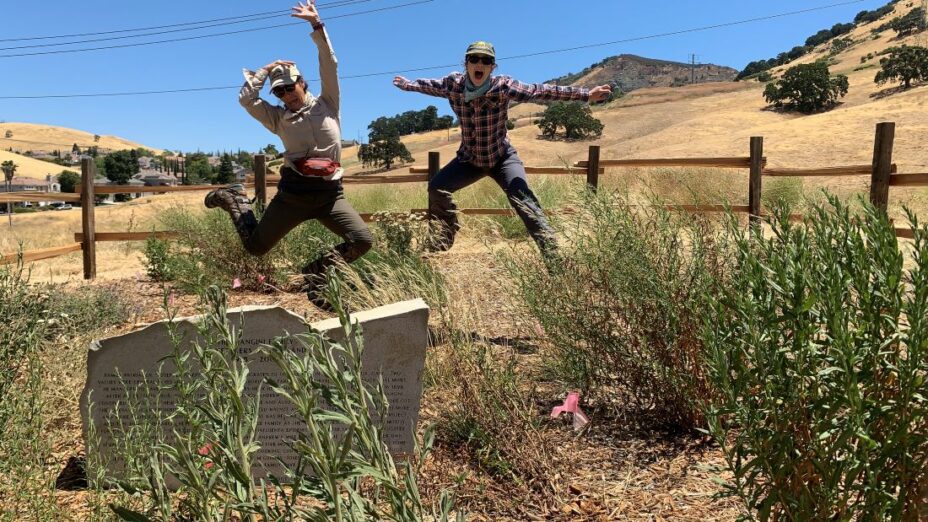
Written by Haley Sutton, Land Stewardship Associate and Frenchy Hendryx, Education & Outreach Associate
Cows Introduced to Marsh Creek 1 and 7
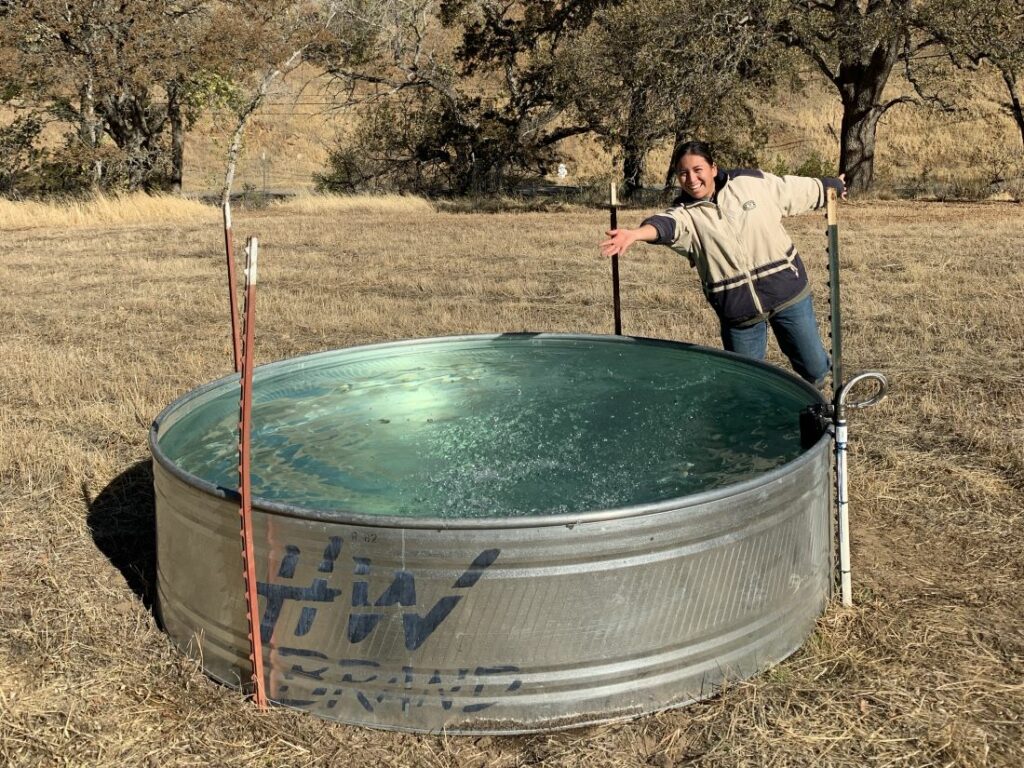
Marsh Creek 7 water trough. Photo by Haley Sutton
Cattle are now grazing our Marsh Creek 1 and 7 properties after various infrastructure was installed to make the properties ready for grazing.
A solar-powered water pump was set up to fill a water trough, and a cattle exclusion fence was installed to protect the conservation values of the creek by keeping cattle out.
With the help of several DiRT volunteers, a temporary exclusion fence was set up across the creek that will be rolled back after cattle are off the property. It will allow the creek to flow freely in winter months.
The cattle will remain on the property for a few months of fire abatement grazing to reduce fuel loads. This project is funded by a grant Save Mount Diablo was awarded by the California Department of Fish and Wildlife.
Thank you to our partners and hardworking volunteers for making this project happen!
Keeping Plants Cool

Volunteers water plants at Marsh Creek 6. Photo by Haley Sutton
Our watering efforts began later than usual this year because local creeks were still flowing into the start of summer thanks to the wet winter.
The restoration areas watered before July were native plantings around the Curry Canyon Ranch field station and protected trees on the hillside behind it, as well as the interpretive gardens at Mangini Ranch Educational Preserve.
In July, we ramped up our watering efforts to include the restoration areas at Marsh Creek 4 and 6, first with volunteers belonging to our partner and supporter, AssetMark.
Volunteers watered all young plants at the two properties before weeding the island at Marsh Creek 4 that was sheet mulched and planted last year. The watering crew convened at the same properties a few weeks later to keep the tri-weekly watering momentum.
As the land gets drier heading into late summer, we plan to have regularly scheduled watering days to keep the young plants happy as they adjust to their permanent environment.
Milkweed Seed Collection

Milkweed seeds. Photo by Haley Sutton
Staff revisited California milkweed (Asclepias californica) plants from the mapping project conducted last year and identified fruits to place seed collection bags.
The plants have gone to seed later in the season this year and still need time in the heat to release seeds for collection.
Stewards in the Field
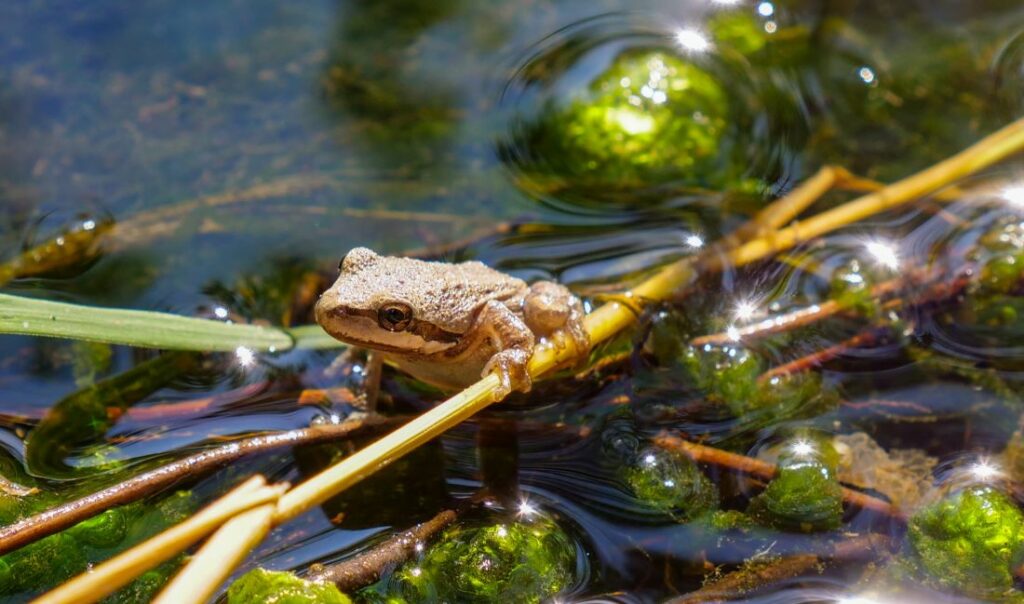
The Sierran tree frog has been seen on Save Mount Diablo’s lands. Photo by Alexander Broom
This month, the Trail Dogs removed artichoke thistle at Lime Ridge Open Space; removed barbed wire fencing in Black Diamond Mines Regional Preserve; and did trail work at Mangini Ranch Educational Preserve, Back Creek Trail in Mount Diablo State Park, and Mollock Trail in Morgan Territory Regional Preserve.
Property stewards observed amphibians in creeks and ponds that still have water.
There are lots of yellow flowering plants across properties, some of which are the strong-smelling and sticky tarplant and others of which are monocultures of the prickly and pesky yellow star thistle.
Kestrels Take to the Sky
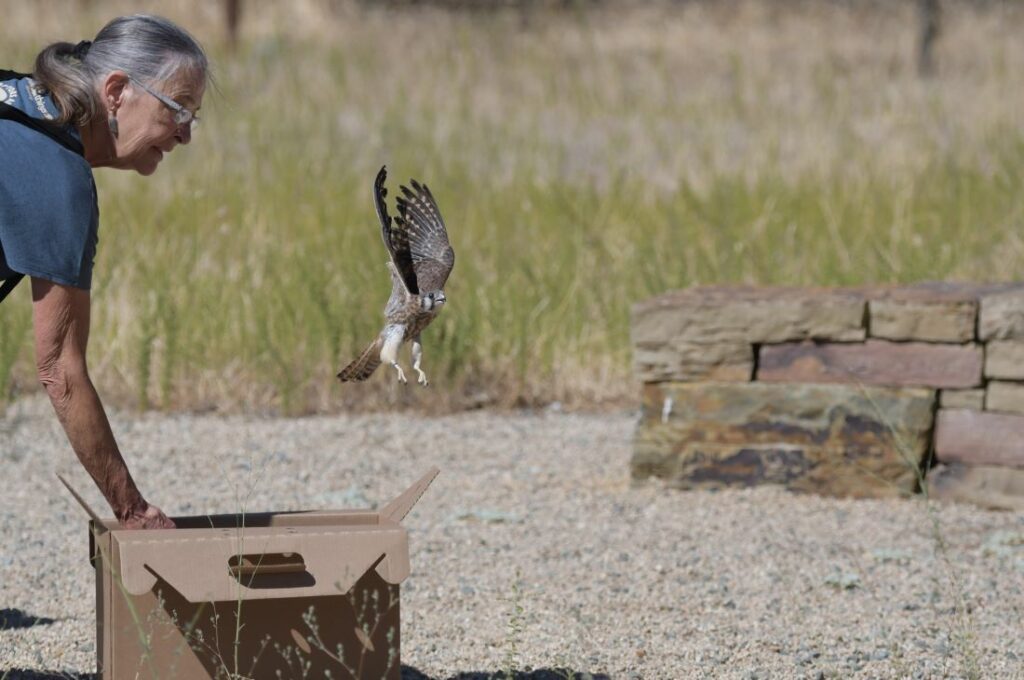
Photo by Sean Burke
Seven beautiful kestrels were released this past July in partnership with Save Mount Diablo, Lindsay Wildlife Experience, and the Wilton Rancheria.
This brings the total to 121 kestrels released or fledged from our nest boxes in the last four years.
Rare Plant Discovered in New Area
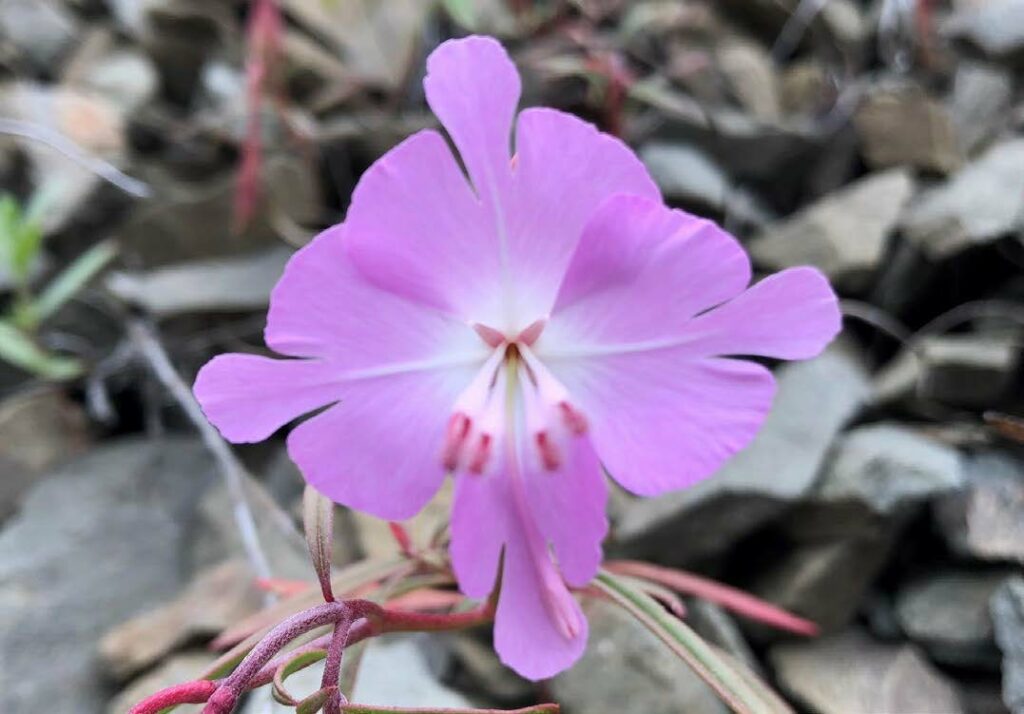
Clarkia breweri. Photo by Frenchy Hendryx
Exciting news!
During this year’s 24-hour BioBlitz that took place at the Alameda-Tesla property on May 5th and 6th, we received confirmation that staff members Frenchy Hendryx and Mary Nagle along with Celeste Garamendi, Patrick Kolar, and Sarah Kupferberg found the first recorded observation of Clarkia breweri in this area.
This is a rare and endemic plant to California, and only one other population in the East Bay has been recorded.
Discover Diablo Program
Beat the Heat and Hike the Suburban Interface with Local Open Space, Saturday, July 8th: Led by Carol and Steve Balling. Participants got an early start at Howe-Homestead Park where they got to watch the morning become day.
Truly a little gem of a park in Walnut Creek where this hike transitions from a narrow green corridor in the suburbs to the expanses of Mount Diablo foothills.
Outreach Events
Danville Library – Exploration Stations, July 11th: Staff members Frenchy Hendryx and Roxana Lucero tabled at this fun event with an audience of families with preschoolers, school-age children, teens, and tweens.
Save Mount Diablo information and mini “Start Your Own Nature Journals” were provided to the families, plus a fun interactive game of “Guess If It’s a California Native or an Invasive Plant” was played.
Twin Canyons Diablo Day Camp, July 27th: Land Programs Director Sean Burke and Education & Outreach Associate Frenchy Hendryx met with 209 Girl Scouts at the Twin Canyons Diablo Day Camp in Lafayette.
Girl Scouts learned about rare and endangered flora and fauna through a fun game of Rare and Endangered Species Bingo.

